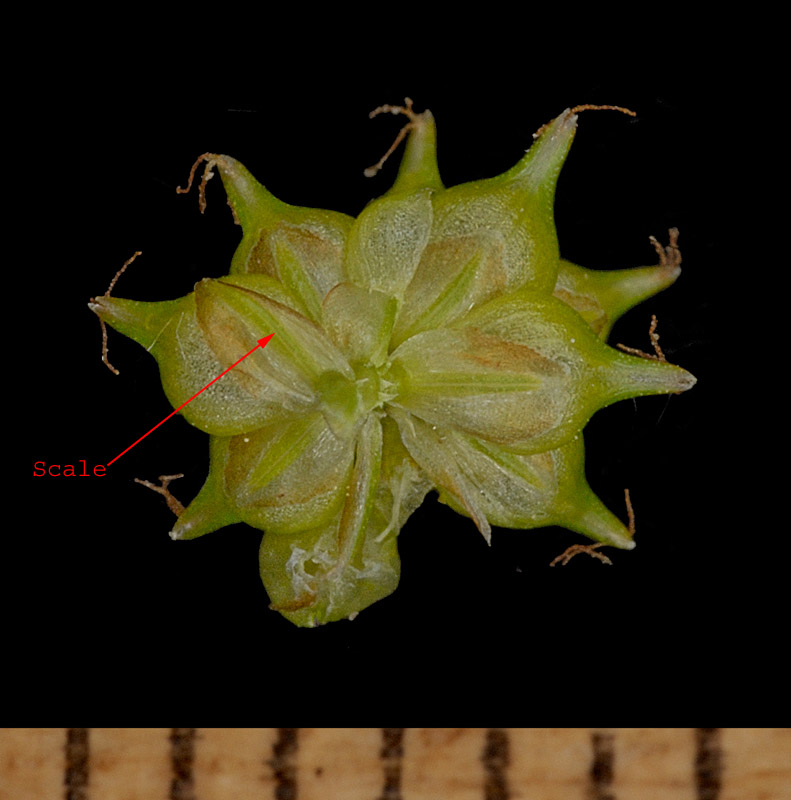 |
Stigmas 3;
achenes three-sided, occasionally terete, though their shape may be
concealed by flattened perigynia. NOT [stigmas 2; achenes
lenticular] |
 |
Spikes 2
or more per culm, terminal and lateral; spike bracts present on lateral
spikes (except in Section Phyllostachyae), lowest bract usually evident,
often conspicuous. NOT [Spikes 1 per culm, terminal; spike bracts
absent]. |
 |
Lower
pistillate scales not bract-like or leaf-like but similar in size and
shape to individual perigynia (up to twice as long as perigynia in C.
magellanica ssp. irrigua). NOT [Lower pistillate scales resembling
green, leaf-like bracts much longer and wider than individual perigynia] |
 |
Perigynia
glabrous. NOT [Perigynia sparsely to densely pubescent or puberulent (in
C. pedunculata pubescence represented by very short hairs scattered near
tip; in some species of Sect. Acrocystis, perigynia may be glabrous or
virtually hairless, but all members of this group have convexly 3-sided
to terete achenes with tight fitting perigynia and a stipe-like base
about equal to beak in length)] |
 |
Beak over
0.5 mm long and usually visibly bidentate (teeth hyaline in C.
sprengelii, inconspicuous in C. viridula, very short in C. oligosperma).
NOT [Beak absent or less than 0.5 mm long; if more than 0.5 mm long,
then terminating in an orifice without teeth] |
 |
Style
jointed at base and deciduous from achene, if present at maturity,
breaks off readily when manipulated. NOT [Style continuous with achene
and persisting at maturity as a long, curved or straight prong] |
 |
All
pistillate spikes sessile or nearly so; base of plant lacking brown
fibers. Section Ceratocystis (C. cryptolepis, C. viridula) NOT
[Lower pistillate spikes with filiform stalks 2-7+ cm long; basal
sheaths shredding to a mass of brown fibers persisting on crown.] |
 |
Perigynia
1.8-3.5 (3.9) mm long; beak about one-quarter the length of perigynium,
faintly bidentate; most perigynia spreading to ascending, a few at base
of spike reflexed. NOT [Perigynia 3.5-4.8 mm long; beak about
one-half the length of perigynium, finely but visibly bidentate; most
perigynia spreading to reflexed, a few at top of spike ascending.]
|

